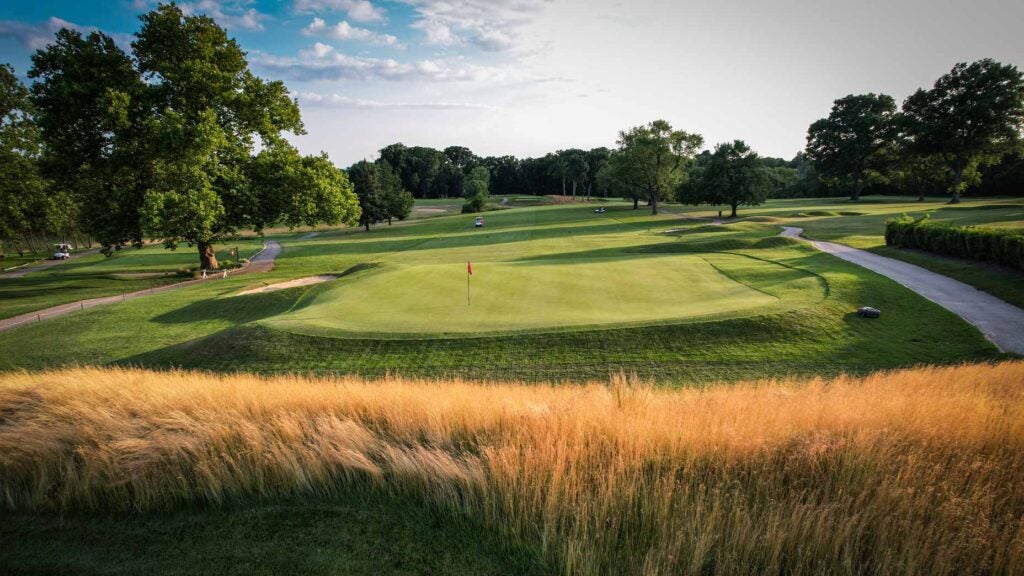I’ll always remember my first visit to Jeffersonville Golf Club. After all, who can forget stepping onto a small stone bridge over a creek and, as soon as your foot hits the surface, seeing a handful of snakes slither away underneath the ivy?
It wasn’t until a few years later, when my high school hosted our tryouts at the municipal course in West Norriton Township, Pa., about 35 minutes outside of Philadelphia, I realized what a stunning layout it was. It wasn’t long until the golf world started to notice too.
Jeffersonville Golf Club, with a peak rate of just $80 on the weekends (with or without a cart), features prominently on GOLF’s first list of America’s best golf courses you can play for $100 or less.
But its transformation from a dried-out, non-descript public course to one of the country’s best values didn’t happen overnight.
The beginning of Jeffersonville’s current era can be traced back to 2000 when the township, which had been operating the 1931 Donald Ross design for the past 28 years, brought in Ron Prichard to restore the course to its Ross glory. This included adding more than 40 original bunkers, installing a modern irrigation system and rerouting the layout to finish with the strong par-4 17th and par-5 18th.
For a few years, the course shined as one of the few gems of Philadelphia-area public golf, but it wasn’t long before the track fell victim to the 2008 financial crisis. The township wasn’t able to put its resources into the course.
It was around that time I had my encounter with some slithery friends while playing the 8th hole (which still makes me think twice every time I walk over that bridge).
When I returned as a high schooler, I started to appreciate the shots presented by the course. Take the 8th hole for an example, a 195-yard par-3 that plays to a slopey small green placed just above a stream and surrounded by trees. Or the 18th, which requires you to cut corners over trees and bunkers twice in order to reach the green in two, and even then, you must leave your ball on the left side of the hole due to the severe right-to-left pitch of the putting surface.
By that time, the money wasn’t there to maintain the course the way longtime superintendent Rich Schilling wanted. The greens were slow, the rough was spotty and some of the bunkers, even the ones added back during the restoration, had faded back into the earth.
That was 2012, which was also the same time the township hired a new manager, Jason Bobst, who wanted to reinvest in the golf course.
“When he came on board, he really allowed [director of golf] Mike [Housley] and myself to do what we thought we needed to do to bring the golf course to where it is today,” Schilling said. “And we slowly chipped away at little pieces of the property that were in decline and built on what we had.”
It started in 2013 with a bunker restoration on the 3rd hole. Schilling brought in Tyler Rae, a previous protege of Prichard, to help with the shaping. He also assisted on similar projects on Nos. 5 and 17. Other small enhancements have been made over the past decade.
“A lot of tree removal, hundreds of trees. Bunker complexes. New fairway cut lines, simplifying the lines, bringing it back to the original,” Schilling said. “Everything’s straight lines rather than these contours around things which, you know, wouldn’t have been done back in the ’30s.”
Added Housley: “Just little subtle things that really make a difference.”
They have. Each time I played Jeffersonville in the past five years, the experience kept improving, and people took notice. Just about every tee time is sold out seven days in advance. The course did 50,000 rounds in 2023 and is on pace to do so again this year.
Also this year, the club opened a brand new $12 million clubhouse, complete with new restaurants, banquet spaces, a fully-stocked pro shop and six Trackman golf simulators in the basement known as “The Stables” a nod to the site’s history as a horse racing track, which is a theme throughout the facility.
“I get more emails, phone calls and text messages every day,” Housley said. “The popularity, I would say, is 10-times more.”
Housley said the timeline for the new building was moved up when the old clubhouse was condemned in 2020. The club’s original plan was to build a par-3 course on land left of the 17th hole where there used to be a driving range, but that idea is on hold due to parking constraints.
The new clubhouse also added 75 jobs to the community. The construction was funded with nearly $5 million in grant money, the balance taken out as a loan. There was fear, due to the costs, a weekend tee time would creep north of $100, but with a maintenance budget that’s still below $1 million a year, Housely and Schilling expect the course to remain an outstanding value thanks to the new revenue sources from the clubhouse and full tee sheet.
“I do always feel like there’s an unwritten rule, being a municipally owned public golf course, to try to stay as affordable as possible,” Housely said.
It’s also important to note that the Philadelphia area lacks high-end public golf. Jeffersonville is the best public access course in the state east of Hershey. None of GOLF’s top 20 courses in the state are public. There is hope given the ongoing restoration at Cobbs Creek in the city, but for now, Jeffersonville toes the line for Pennsylvania munis.
“If we can pack this building for people like we pack the golf course, then we’ll all be good and I’ll be happy,” Schilling said.
Looking for an affordable golf course near you? Visit our new Course Finder tool and search by price!
